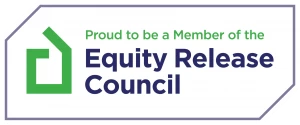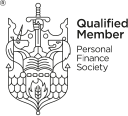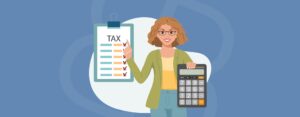What is an SA302 Form and Why Do Mortgage Lenders Ask for It?

Being self-employed can make the mortgage application feel slightly more complicated. You will often have to provide additional documentation and one of the most important requirements for a self-employed mortgage will be the SA302 form.
But what is an SA302 form?
Whether you’re self-employed, a landlord, or have irregular income, the SA302 tax form can help lenders predict your future annual earnings and solidify your financial position as a potential borrower.
In this article, we explore everything you need to know about the SA302 form. From why lenders require it to how it can help bolster your mortgage application. Let’s jump in.
What is an SA302 Tax Form?
An SA302 form is officially issued by HM Revenue & Customs (HMRC) and will provide a detailed breakdown of your self-assessed income for a particular tax year. For those who are self-employed or have complicated incomes, an SA302 form will form a crucial part of proving your income when applying for a mortgage.
In simple terms, the SA302 will identify your total income from all sources – not just from one job or business – that you’ve declared to the HMRC. For example, this can include earnings from self-employment, dividends, or any other taxable income.
Crucially, an SA302 tax form will also identify your taxable income. This is what the HMRC uses to work out how much tax you owe per year and will confirm how much tax you’ve paid to-date.
In the context of your mortgage application, providing your SA302 tax form can help reassure lenders that your financial affairs are all in order. By looking at your SA302, mortgage lenders will be able to highlight your income and provide you with an accurate borrowing amount that is based on your specific affordability.
See What Our Clients Have To Say...
Why Do Mortgage Lenders Ask for an SA302?
Mortgage lenders will ask for an SA302 because it shows your official income and tax calculations from HMRC. For self-employed applicants who do not have monthly payslips or a P60, the SA302 tax form will replace this to act as the proof of earnings.
In addition, the SA302 will also form part of a broader tax overview for mortgage purposes, showcasing consistent income patterns and highlighting any fluctuations.
Ultimately, lenders will use the SA302 tax form to assess the financial stability of your business and determine an average salary expectation. By reviewing your total income over a number of years, they can estimate your earnings and assess affordability, helping to reduce their lending risk.
While some lenders may not require an SA302 if you have alternative evidence of income, most lenders will request this as a standard document for self-employed mortgage applications.
Common Scenario
- Problem: Tom, a freelance photographer, wanted to secure a mortgage but doesn’t have traditional payslips and didn’t know how to prove his income was consistent.
- Solution: By providing his lender with his SA302 form for the past two years, his chosen lender was able to calculate his annual income and Tom was able to secure a mortgage that aligned with his financial needs at a competitive rate.
At Boon Brokers, our dedicated mortgage advisers can help you secure the mortgage deal that matches your financial situation. With whole-of-market access, it doesn’t matter if you’re employed, self-employed, or looking to remortgage, we can help you compare deals from a wide range of lenders to find one that matches your financial situation and borrowing needs.
How Do I Request or Download My HMRC SA302 Tax Calculation Form in the UK?
If you need an SA302 form for a mortgage, the HMRC provides an official document that will verify your income and highlight your tax calculations.
You can download this form very easily and quickly through the HMRC’s online Personal Tax Account, making it straightforward to provide lenders with the proof they require.
To request a SA302 form online:
- Log in to your HMRC online account.
- Go to the self-assessment section.
- Select the tax year you need and view your calculation.
- Download or print your SA302 tax form.
If you cannot access your account, it is best to contact HMRC to request a hard copy.
Depending on your chosen lender and complexity of your application, some lenders may require stamped or original documents. As such, it’s a good idea to check their specific requirements before submitting your application. By working with a trusted mortgage broker – like Boon Brokers – you can rest assured that your mortgage application is in the hands of professionals.
At Boon Brokers, our dedicated mortgage advisers will guide you through every step of your application. From checking what documents your chosen lender requires to helping you request and submit your SA302 correctly.
Get expert mortgage advice and guidance on obtaining your SA302 form.
Get In TouchHow Many Years of SA302 Forms Do Mortgage Lenders Require?
The most common question that our mortgage brokers get asked is: how many years of SA302 forms do lenders need? Most lenders will request SA302 forms for the last two to three tax years to verify consistent income and assess affordability.
While some lenders may request a single year of tax reviews, reviewing multiple years will help lenders account for any fluctuations in self-employed earnings and reduce their associated risk with lending.
Below we have provided a clear breakdown of what lenders will typically expect and why:
| Number of Years Requested | Why Lenders Ask | Impact on Mortgage Approval |
| 1 Year | Confirms your most recent annual income | May be sufficient for specialist lenders, for smaller loans, or highly stable income. |
| 2 Years | Shows income consistency over a longer period | Standard requirement; increases lender confidence and helps assess affordability |
| 3 Years | Demonstrates consistent earnings and averages fluctuations | Strengthens your application, particularly if income varies year-to-year; commonly requested for larger mortgages |
Wondering how to get SA302 for previous years? The HMRC will let you download past forms from your online account or request them by post.
It’s best practice to keep a record of your last few years’ tax calculations to ensure that you can respond quickly to any lender requests and ensure your mortgage application runs smoothly.
Frequently Asked Questions
What’s the Difference Between an SA302 and a Tax Overview From HMRC?
An SA302 gives a detailed breakdown of income and tax for a specific year, while a Tax Overview summarises your overall tax position.
Mortgage lenders will often request both documents together in order to verify your annual income. Requirements can vary from lender to lender and so it’s best to always confirm what your chosen lender needs before submitting.
Can I See an Example of an SA302 Form From HMRC?
Yes, HMRC provides official SA302 examples online. These show the format and information lenders expect, helping you prepare the correct documents.
What If I Can’t Access My HMRC Online Account to Get an SA302?
If you can’t access your HMRC online account, you can request a printed SA302 directly from HMRC.
Can a Mortgage Broker Help You Get an SA302?
While brokers will not be able to issue you the form themselves, they can play a crucial role in guiding you through the entire mortgage application process. A mortgage broker can help you request the correct documentation from HMRC and present it in a professional way that meets your chosen lender’s expectations, helping to avoid delays or mistakes.
At Boon Brokers, our dedicated mortgage advisers specialise in supporting self-employed borrowers. With whole-of-market access, we can help you compare both popular high-street and specialist lenders that are most likely to accept your application.
From evaluating your income profile and providing step-by-step guidance on how to submit your mortgage application alongside other supporting documents, our expert mortgage advisers can ensure your journey to homeownership is simple and stress-free.
Contact Boon Brokers today for fee-free expert mortgage advice. We deliver unbiased advice that is tailored to your financial situation, ensuring you’re matched with the most suitable mortgage deal for you.
Kathryn HailesCeMAP
Kathryn Hailes is a CeMAP-qualified mortgage and protection adviser who has been supporting clients with their mortgage needs since 2018. With a wealth of experience across residential and buy-to-let cases, Kathryn specialises in guiding first-time buyers through their mortgage journey.Related Articles
- How Does Being Self Employed Affect A Joint Mortgage?
- Fixed Rate Mortgage
- Advantages Of A Mortgage Broker
- What Is A Shared Equity Mortgage?
- The Mortgage Underwriting Process
- How To Get A Mortgage With A New Job
- Can I Overpay My Mortgage?
- How To Improve Your Chances Of Getting A Mortgage
- What Is Checkmyfile?
- Choosing A Mortgage Broker
- Can I Get a Mortgage on Maternity Leave?







